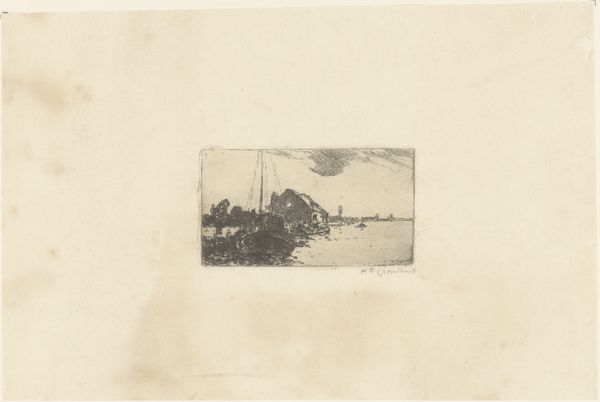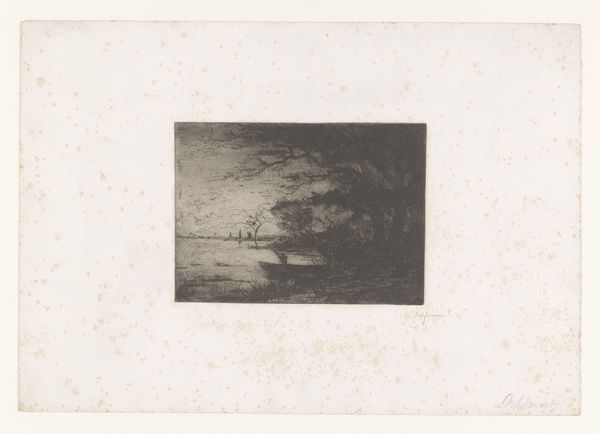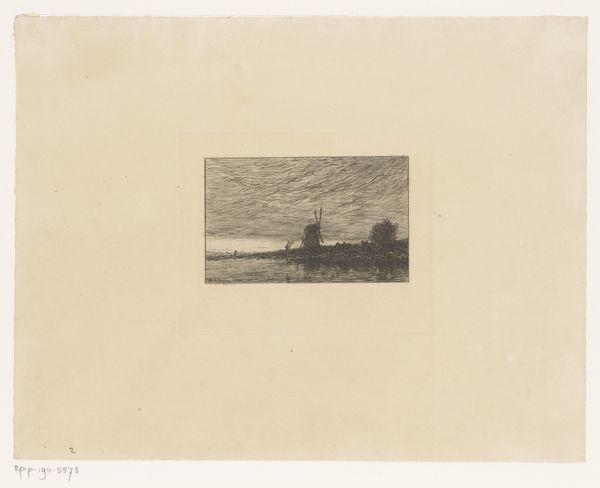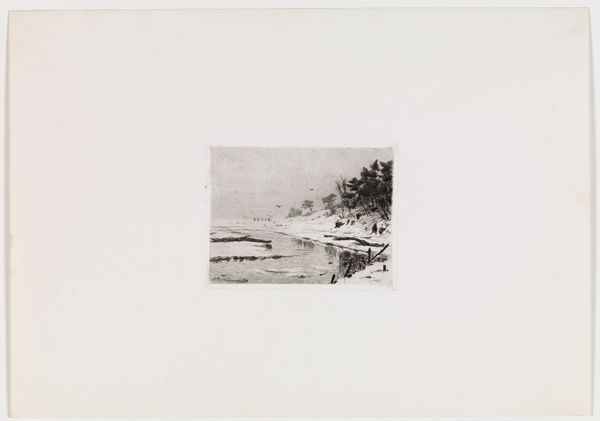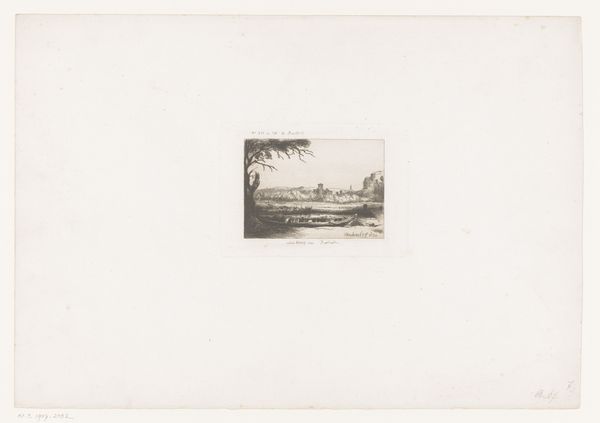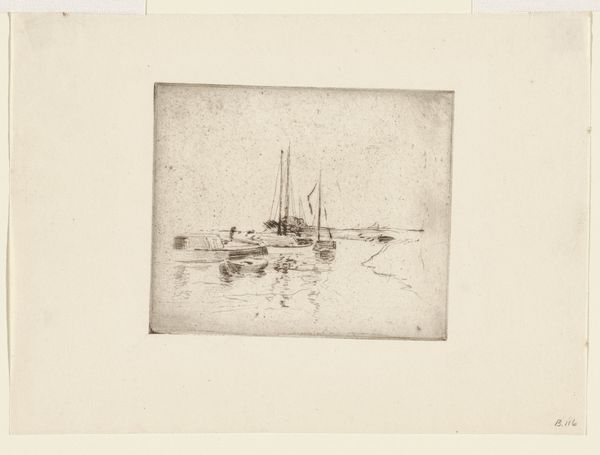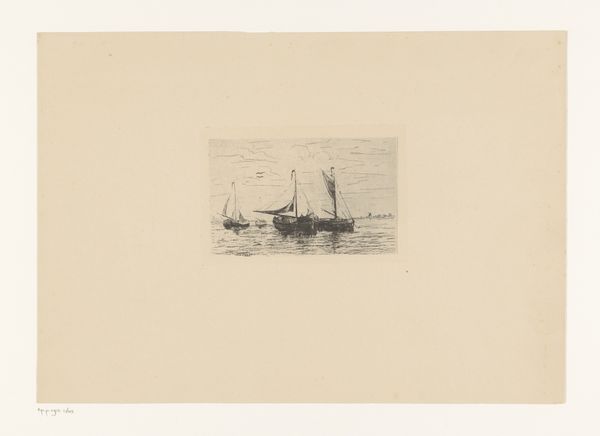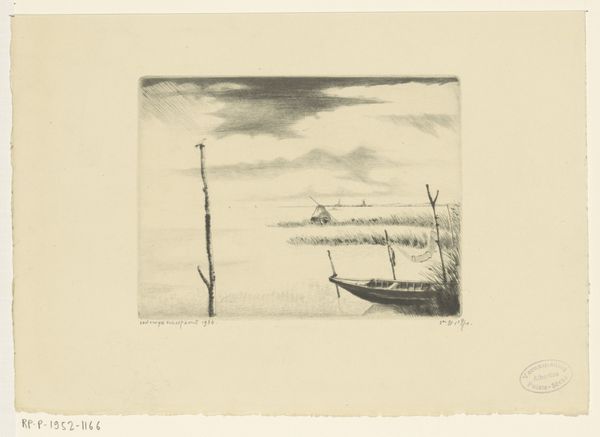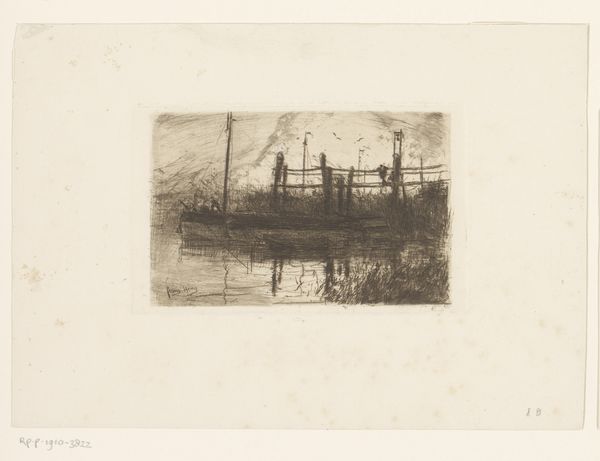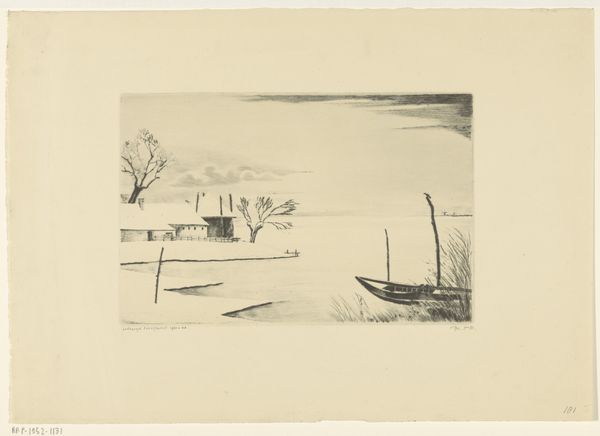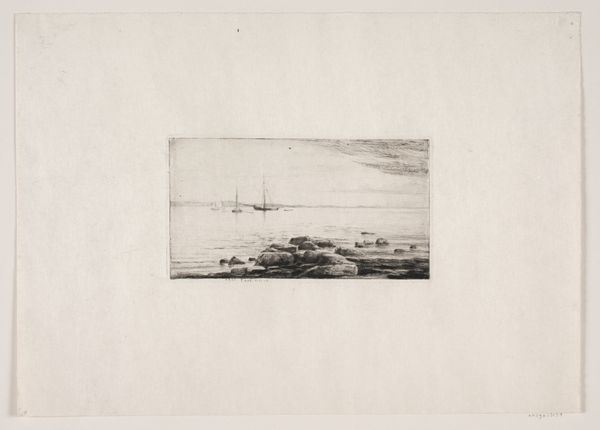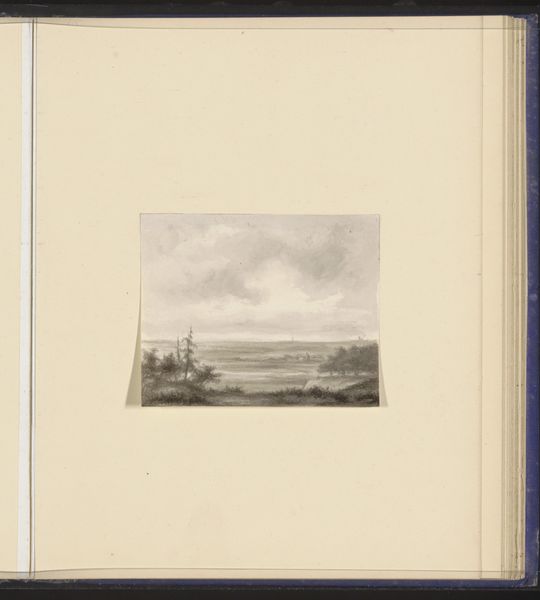
print, etching, paper
#
lake
#
light pencil work
#
dutch-golden-age
# print
#
etching
#
landscape
#
paper
#
line
#
realism
Dimensions: height 120 mm, width 158 mm
Copyright: Rijks Museum: Open Domain
Curator: Look at the stark beauty of this etching titled "Veenplassen bij Kortenhoef" by Lodewijk Schelfhout, created in 1936. It depicts a Dutch lake landscape rendered through the printmaking technique. Editor: It's so delicate, almost like a whispered memory. The subtle gradations in tone give it an ephemeral quality. It's really quite subdued and gentle for a landscape print. Curator: The use of etching certainly contributes to that. Consider the labour involved: the artist would have meticulously scratched the image onto a metal plate, allowing acid to bite into the lines. These deliberate material choices influence the image profoundly. Editor: And how did those material choices position this work and artist? Landscape prints held an interesting, often democratic, position in the art market; reproduced, disseminated widely and sometimes associated with ideas of national identity. How does Schelfhout use imagery and distribution, I wonder? Curator: Good question! And while the style here seems to harken back to the Dutch Golden Age of landscape painting, one cannot ignore its placement within the twentieth century's context of shifting cultural values and access to artistic resources. The choice of depicting such a humble landscape during a time of industrial expansion perhaps speaks to deeper societal concerns. Editor: That is astute! Perhaps the muted palette and almost stark realism operate in direct contrast to the burgeoning visual culture of the time, laden as it was with commercial photography. There's a quiet resistance here, I think. Curator: Exactly! This work reminds us of the layers inherent in every artistic decision. Editor: It's remarkable to reflect on how socio-political and art historical positioning impact even such an outwardly 'simple' composition like this. Curator: I think by investigating how a print, normally relegated, circulates, is also another step into understanding the wider cultural meaning for both then and now. Editor: It encourages a deeper reading into its time. Thanks!
Comments
No comments
Be the first to comment and join the conversation on the ultimate creative platform.
